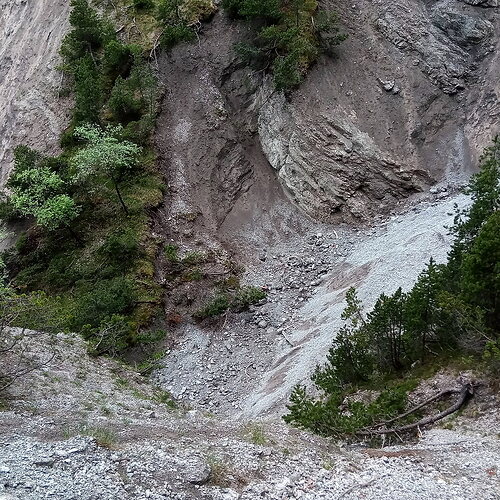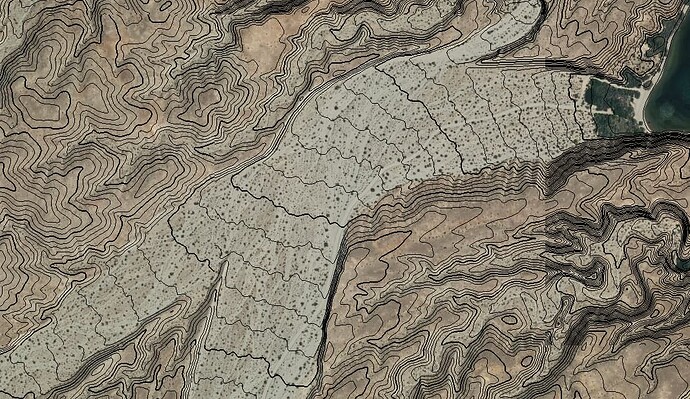I don’t think the picture above meets the definition of a wadi as we have it in the proposal. The brief definition of wadi from the proposal is “The broad, flat channel of an ephemeral stream with distinct banks” and the more detailed definition is:
A wadi, also known regionally in the U.S. as a dry wash or arroyo, is a normally dry watercourse in an arid or desert region. Wadis have distinct banks formed by erosion, beds of loose rock typically composed of the same cobble, gravel, and sand as the surrounding terrain (or decomposed from surrounding bedrock). Many wadis only have flowing water during relatively rare flash floods but some wadis have ephemeral water flow following seasonal storms. Water flow in wadis may be sheet flow across a broad surface or channelized into streams that shift with each successive flood. Under normal conditions, there is no surface water in a wadi.
The photo above looks more like natural=gully to me.
The proposal came out of a long discussion about the deficiencies of the currently available tags in OSM as applied to wadis. What we’re really talking about is that mappers are applying tags like natural=scree or natural=wetland in places where they don’t belong because they are tagging for the renderer in their attempts to map wadis.
The proposal is to create a tag that can be used to map wadis properly, even though this tag may not be rendered at all in the near future.
As for drawing the boundaries, natural=gully is mapped with a single way down the center of the feature. That would work well with the picture above.
With an actual wadi, the banks are notably distinct from the broad, flat area of the feature. Here’s a picture to illustrate that:
If you look closely there’s a track through the wadi in this picture, which can give you some idea of the scale of the feature. The banks are steep and well-defined in contrast to the broad, flat area of the wadi. These can easily be mapped both from aerial imagery and from the overlayed topo contours.
Unfortunately, this particular wadi is currently mapped in OSM as natural=wetland. Which, clearly, it is not.

